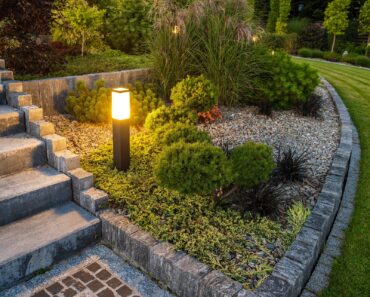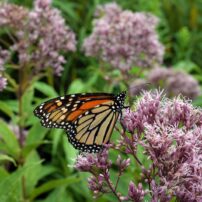Gardening is a fun hobby that has plenty of health benefits. If you’ve been thinking about converting a barren backyard into a stunning landscape of greens, these six tricks will help you build a garden that requires minimal time and effort to care for.
 1. Know the Type of Soil
1. Know the Type of Soil
How do you keep your garden simple? The first trick is learning about the soil. Plants get nutrients directly from the soil, so ensuring they have the best ground for growing roots makes a massive difference in the care they need.
Types of soil include:
- Clay
- Silt
- Sand
- Loam
- Gravel
- Chalk
- Peat
Clay-heavy soils retain plenty of water and are slightly acidic. They provide a good base for trees like white oak, maple and bald cypress. Meanwhile, sandy ground that drains water fast and doesn’t retain moisture is ideal for red oak, persimmon and ginkgo.
Loam soil is the best type to grow most plants and trees. It retains a healthy balance of moisture and water drainage and hosts vegetation and decomposers, making nutrients readily available.
Examine the soil in your backyard to learn more about what plants can thrive in it.
2. Grow Native Plants
Drought-tolerant shrubs like geraniums are a mainstay of a low-maintenance garden. They’re popular, have more than 500 species and are grown around the world in temperate climates. You’ll love them even more if you’re looking for a budget-friendly option since you can get them from under $3 a plant at a local nursery. They’re resilient, do well under a variety of conditions and are semi-evergreen, meaning they remain green in mild winter.
Other options include sweetgum, pond cypress and sweet pepperbush. Ask your local garden centers if you need more information about native plants. An expert can recommend the best selections based on your location and preference.
3. Feed the Soil
Another feature of a low-maintenance garden is good soil quality. Focus on tending the ground as it feeds the nutrients directly to the plants. You can do this by composting.
Compost reduces the need for regular fertilizers during the early stages of plant growth. It contains organic nutrients that are slowly released into the soil as leaves and manure decompose, giving roots long-term sustenance.
It also absorbs water, keeping the plants from drying out quickly during summer. Lastly, it discourages the growth of certain weeds by balancing the nutrient ecosystems in the soil, promoting an excellent environment for your plants to grow.
4. Use a Deep Layer of Mulch
Like compost, adding a protective layer of mulch can make garden maintenance easier, especially for older people. Mulch has a long list of upsides. For one, it increases moisture retention in the soil, reducing the need for frequent watering.
It also restricts the fluctuation in soil temperatures by about 10-15 degrees, giving the roots a damp environment in which to thrive. In comparison, an unmulched area can increase warmth by 30-40 degrees during the day, causing the ground to dry fast.
Purchase organic mulches made of straw, grass clippings, chopped leaves or wood chips to cover an area in your garden. Lay them down evenly around newly planted shrubs or trees. A few inches thick should be enough to provide a protective layer for the roots.
5. Lay a Gravel Path
A gravel path is a better alternative to grassy walkways that demand regular maintenance. It keeps your garden simple and maintenance effortless. When done right, it can add visual appeal to your landscape.
Where do you start? First, consider the width and shape when designing the path. A straight path may be more functional, but adding a slight curve and contour can soften the view and make the landscape attractive.
You won’t have to trample on the greens and harm your perfectly clipped lawns if you need to get around.
6. Make Watering Simple
Some plants require more water than others and are tricky to care for. Technology helps simplify watering with the use of a soil moisture sensor and a pump. How does it work?
It involves building a circuit that detects when the ground is too dry. If plants need nourishment, the system provides water and stops when the soil reaches the correct moisture level. You can expand the system to the entire outdoor garden. When you’re away for an extended vacation, you won’t have to worry about your plants dying when you arrive.
If you prefer to do the task manually, use a wand to extend the reach of your hose nozzle. It will soften the water flow and sprinkle more plants simultaneously.
Keep Gardening Simple
Tending to plants requires time and effort, but you can simplify the task by following the tips above to build a low-maintenance garden. Choose native plants to grow, add a protective layer of mulch, feed the soil and make watering less demanding. Whether you’re a beginner or a seasoned gardener, a straightforward method of gardening will benefit you.




























